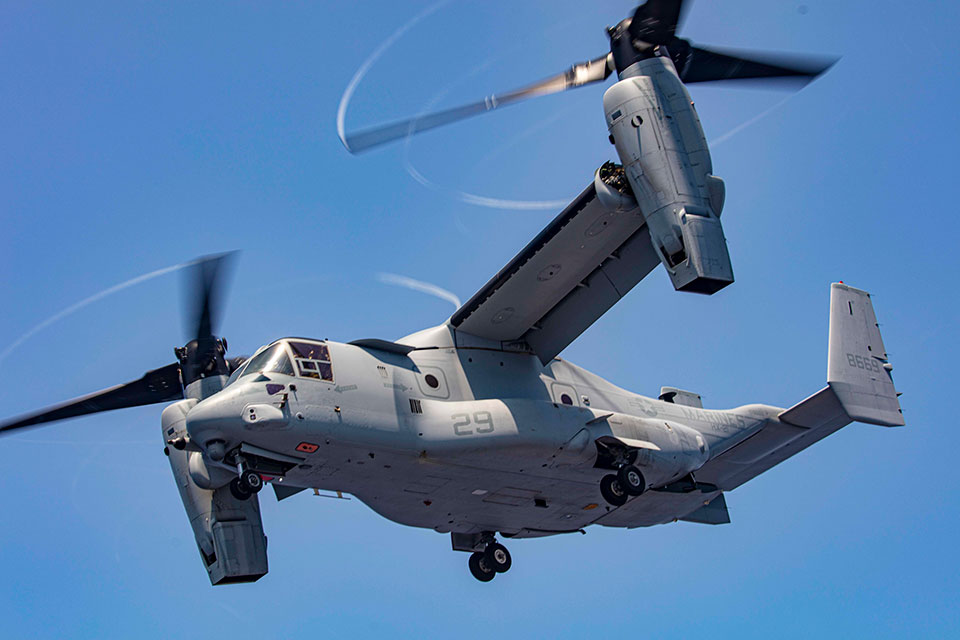The MV-22 Osprey stands as one of the most innovative and versatile aircraft in modern military aviation. A hybrid between a helicopter and a fixed-wing plane, this tiltrotor marvel has transformed how military forces deploy troops and equipment in complex environments. But what makes the Osprey so revolutionary?

A Game-Changer in Design
At first glance, the MV-22 Osprey looks like something out of a science fiction movie. With its massive, tilting rotors positioned at the ends of its wings, the Osprey can take off and land vertically like a helicopter, yet fly at speeds and altitudes comparable to traditional airplanes. This dual functionality gives it a unique advantage in military operations, where speed, range, and flexibility are often the keys to success.
The Osprey’s ability to quickly transition between vertical and horizontal flight is a game-changer. It can take off from cramped spaces like a helicopter, then tilt its rotors forward to cruise at high speeds, covering more ground in less time than traditional helicopters. This combination of speed and maneuverability allows the MV-22 to perform missions that were previously impossible or required multiple aircraft.
Superior Range and Payload
One of the standout features of the MV-22 Osprey is its exceptional range. Unlike conventional helicopters, which are often limited by their fuel capacity and speed, the Osprey can fly over 1,000 nautical miles without refueling. This makes it ideal for long-range deployments, quick extractions, and rapid troop insertions deep into enemy territory.
In addition to its range, the MV-22 boasts an impressive payload capacity, capable of carrying up to 24 fully equipped Marines, or nearly 20,000 pounds of cargo. Whether it’s delivering critical supplies to a remote base or inserting special operations forces into a hostile zone, the Osprey’s versatility is unmatched.

A Battle-Proven Aircraft
Since entering service with the U.S. Marine Corps in 2007, the MV-22 Osprey has been battle-tested in some of the most demanding environments, from Iraq and Afghanistan to humanitarian missions around the world. Its ability to transport troops quickly and safely in and out of dangerous areas has made it a vital asset in modern warfare.
The Osprey’s performance during combat missions has proven its worth, allowing forces to adapt to the changing landscape of warfare. It has dramatically reduced response times, enabling quicker medical evacuations and rapid resupply missions, ultimately saving lives on the battlefield.
Conclusion: The Future of Military Aviation
The MV-22 Osprey represents the future of military air mobility. Its unique tiltrotor technology, combined with its speed, range, and payload capabilities, has made it an indispensable tool for modern military operations. As the global security landscape continues to evolve, the Osprey’s versatility ensures that it will remain at the forefront of military aviation for years to come.
For the U.S. Marines and other military branches, the Osprey is more than just a transport—it’s a lifeline that redefines how missions are conducted, bringing speed and flexibility to the battlefield like never before.






